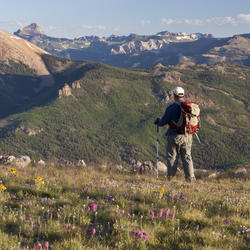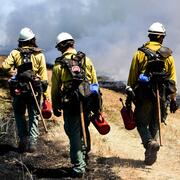Quantitative Modeling
A requirement for managing a species, be it a common native species, a species of conservation concern, or an invasive species, is having some information on its distribution and potential drivers of distribution. Branch scientists have been tackling the question of where these types of species are and where they might be in the future. Focus species are as varied as the invasive tamarisk, Russian olive, Africanized honey bee and nutria to the federally threatened Lesser Prairie chicken and others. These and other species are modeled at a variety of spatial scales, from park or wildlife refuge to global levels. Models use various predictor layers that can include current and future climate layers (near- and long-term projections), remote-sensing derivatives (such as MODIS phenology metrics), land cover, topography, and anthropogenic features.













